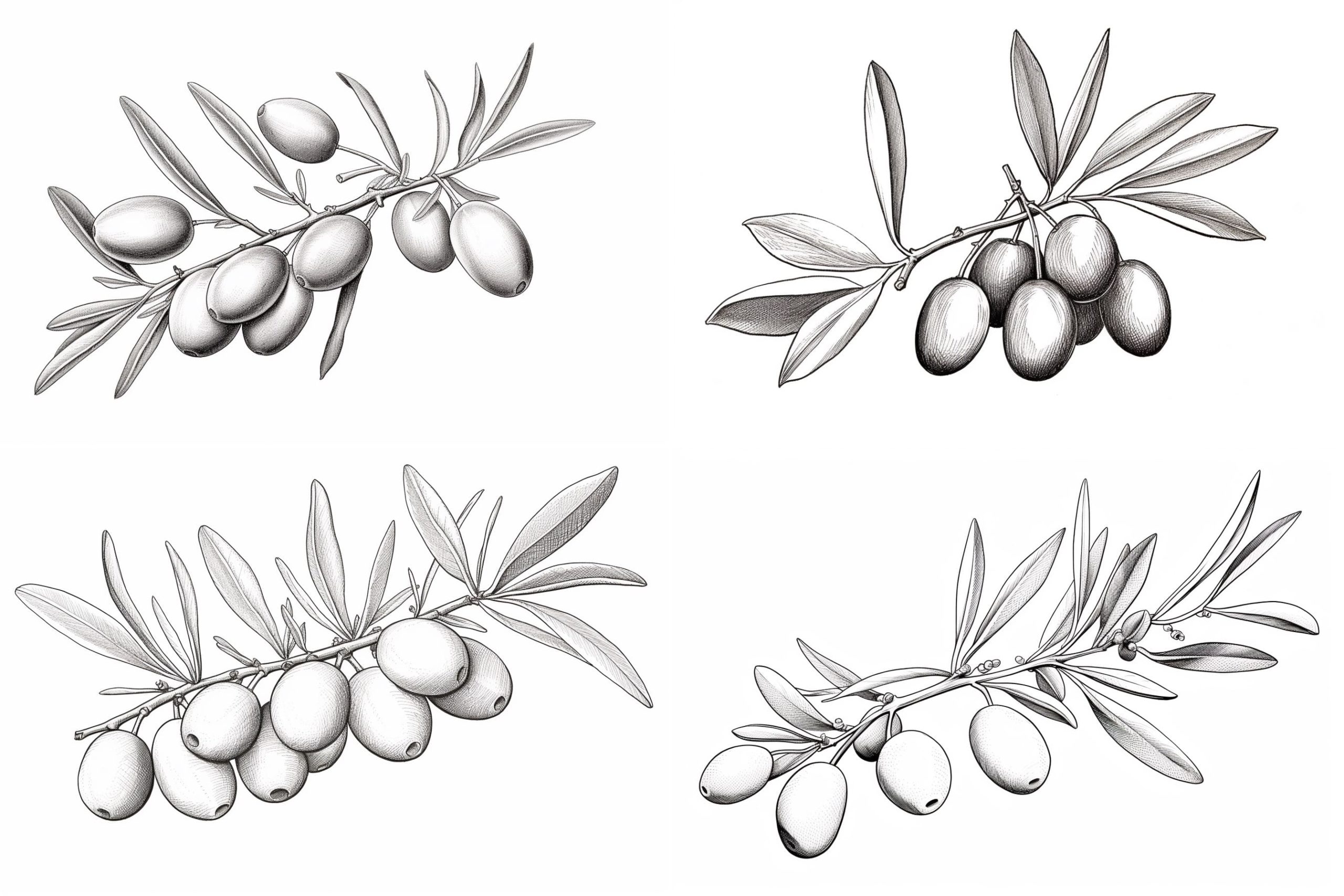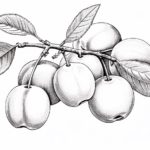Drawing Olive can be a delightful and rewarding experience for any artist. The elegant curves of her branches, the intricate patterns of her leaves, and the subtle variations in her color make Olive a captivating subject to capture on paper. In this guide, we will explore techniques to help you bring out the beauty and essence of Olive in your drawings. From mastering the art of shading to capturing the unique texture of her leaves, you will learn how to infuse your artwork with life and vitality. So grab your pencils, sharpen your skills, and let’s dive into the wonderful world of drawing Olive!
Materials Required
To draw an olive, you will need the following materials:
- Drawing paper or sketch pad
- Pencil for sketching
- Eraser for correcting mistakes
- Fine-tip black pen or marker for outlining
- Colored pencils or markers for coloring (green for the olive and possibly brown for the pit)
- Reference image of an olive for guidance
These materials will help you create a detailed and realistic drawing of an olive.
How to Draw an Olive: a Step-by-step Guide
Step 1: Gather Your Materials
Gather all the necessary materials for your drawing. You will need a pencil, eraser, paper, and any coloring tools you wish to use.
Step 2: Start with the Outline
Begin by lightly sketching the basic shape of the olive. Start with an oval shape for the body of the olive and a smaller oval or circle for the pit.
Step 3: Refine the Shape
Refine the outline of the olive, paying attention to the curves and proportions. Make sure the pit is placed correctly within the body of the olive.
Step 4: Add Texture
To create the textured surface of the olive, draw small, curved lines across the body of the olive. These lines should follow the shape of the olive and give it a realistic appearance.
Step 5: Shade the Olive
Start shading the olive to give it dimension. Begin by adding a light layer of shading across the entire olive, paying attention to where the light source is coming from. Add darker shading to areas that would be in shadow, such as underneath the pit and along the bottom edge of the olive.
Step 6: Add Highlights
Use your eraser to gently lighten areas of the olive where the light would hit it most directly. This will create highlights and make the olive appear more three-dimensional.
Step 7: Final Details
Add any final details, such as a stem or additional shading to enhance the realism of the olive. Take your time to ensure that all the details are well-executed.
Step 8: Color (Optional)
If you choose to add color to your drawing, use shades of green and brown to color the olive and pit realistically. Blend the colors smoothly to create a natural appearance.
Step 9: Evaluate and Adjust
Step back and evaluate your drawing. Make any necessary adjustments to the shading, texture, or proportions to improve the overall look of the olive.
Step 10: Sign and Date
Once you are satisfied with your drawing, sign and date it to mark your completion. Congratulations on drawing a realistic olive!
Conclusion
In conclusion, mastering the art of drawing an olive involves paying attention to its unique shape, texture, and light reflection. By practicing techniques such as shading, blending, and using varying line weights, artists can capture the essence of an olive and bring it to life on paper. Remember to take your time, observe closely, and enjoy the process of creating art that celebrates the beauty of this small but vibrant fruit. With dedication and patience, anyone can become proficient in drawing olives and enhance their artistic skills.
Fun Facts About Olives
- Olives are technically a fruit, not a vegetable. They belong to the fruit category known as drupes, which includes fruits with a fleshy outer layer surrounding a pit or stone.
- The olive tree, known as Olea europaea, is an ancient tree species that can live for hundreds or even thousands of years. Some olive trees in the Mediterranean region are believed to be over 2,000 years old.
- Olives have been cultivated for thousands of years and are one of the oldest known cultivated trees in the world. They have been a symbol of peace, wisdom, and abundance in various cultures and religions throughout history.
- There are thousands of olive varieties grown around the world, each with its own unique flavor profile and characteristics. Some popular varieties include Kalamata, Manzanilla, Picholine, and Ligurian olives.
- Olives are a staple in the Mediterranean diet, which is known for its numerous health benefits. They are rich in monounsaturated fats, antioxidants, and vitamins, making them a heart-healthy food choice.
- The color of olives is not necessarily an indication of ripeness. Green olives are typically picked before they ripen, while black olives are left on the tree to fully ripen and darken in color.
- Olive oil is extracted from the fruit of the olive tree and is a popular cooking ingredient and condiment worldwide. It is known for its rich flavor, health benefits, and versatility in the kitchen.
- Olives are traditionally cured before consumption to remove their natural bitterness and improve their flavor. Common curing methods include brining, dry curing, and lye curing.
- The olive branch has been a symbol of peace and victory since ancient times. In Greek mythology, the goddess Athena is said to have planted the first olive tree on the Acropolis in Athens, and the olive branch has since been associated with peace and prosperity.
- In some cultures, it is considered bad luck to cut down an olive tree. Olive trees are highly valued for their longevity, resilience, and symbolism, and are often passed down through generations as a cherished family heirloom.
Suggestions for Scenes and Settings for Olive Drawings
Certainly! Here are some specific suggestions for scenes and settings to inspire drawings of Olive:
- Olive in a Flower Garden: Drawing Olive surrounded by colorful flowers, butterflies, and bees can create a whimsical and vibrant scene.
- Olive at the Beach: Imagine Olive building sandcastles, playing in the waves, or relaxing under a beach umbrella with seagulls flying overhead.
- Olive in a Magical Forest: Picture Olive exploring a mystical forest filled with towering trees, sparkling streams, and friendly woodland creatures.
- Olive in Space: Get creative and draw Olive floating among the stars, planets, and galaxies in a futuristic space setting.
- Olive’s Secret Hideout: Create a cozy and imaginative hideout for Olive, perhaps nestled in a treehouse or hidden in a magical cave.
- Olive in a Fairytale Castle: Draw Olive as a princess or knight exploring a grand castle complete with turrets, drawbridges, and a dragon guarding the entrance.
- Olive on a Pirate Ship: Set sail with Olive on a pirate ship adventure, complete with a Jolly Roger flag, treasure chests, and crashing waves.
- Olive in a Winter Wonderland: Capture Olive ice skating on a frozen pond, building a snowman, or sipping hot cocoa in a snowy landscape.
- Olive in a Sci-Fi City: Imagine Olive navigating a bustling futuristic cityscape with hover cars, neon lights, and towering skyscrapers.
- Olive at a Carnival: Draw Olive enjoying the sights and sounds of a lively carnival with colorful rides, games, and cotton candy.
These suggestions can spark your creativity and help you envision various scenes and settings to bring Olive to life in your drawings. Have fun exploring different themes and creating unique artworks!









